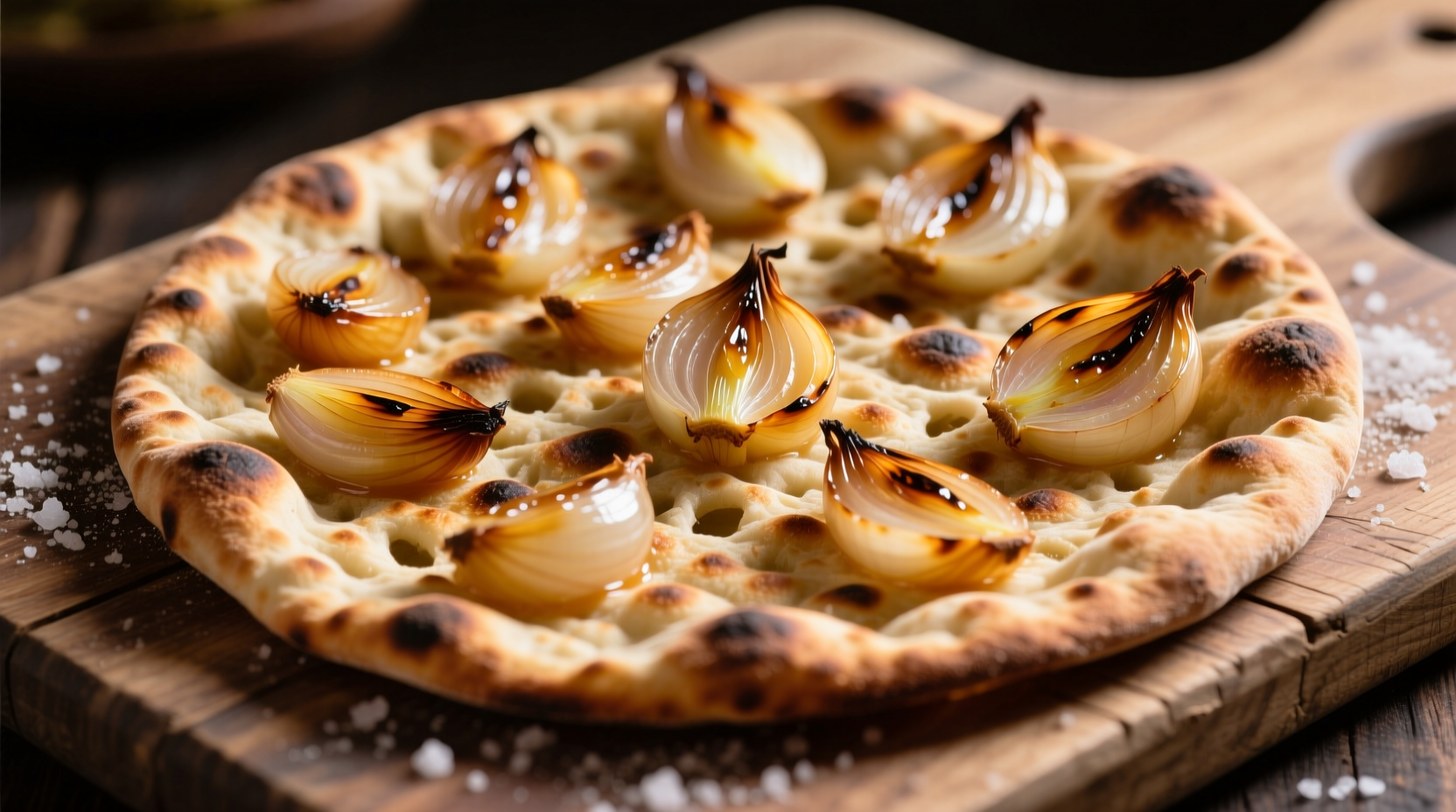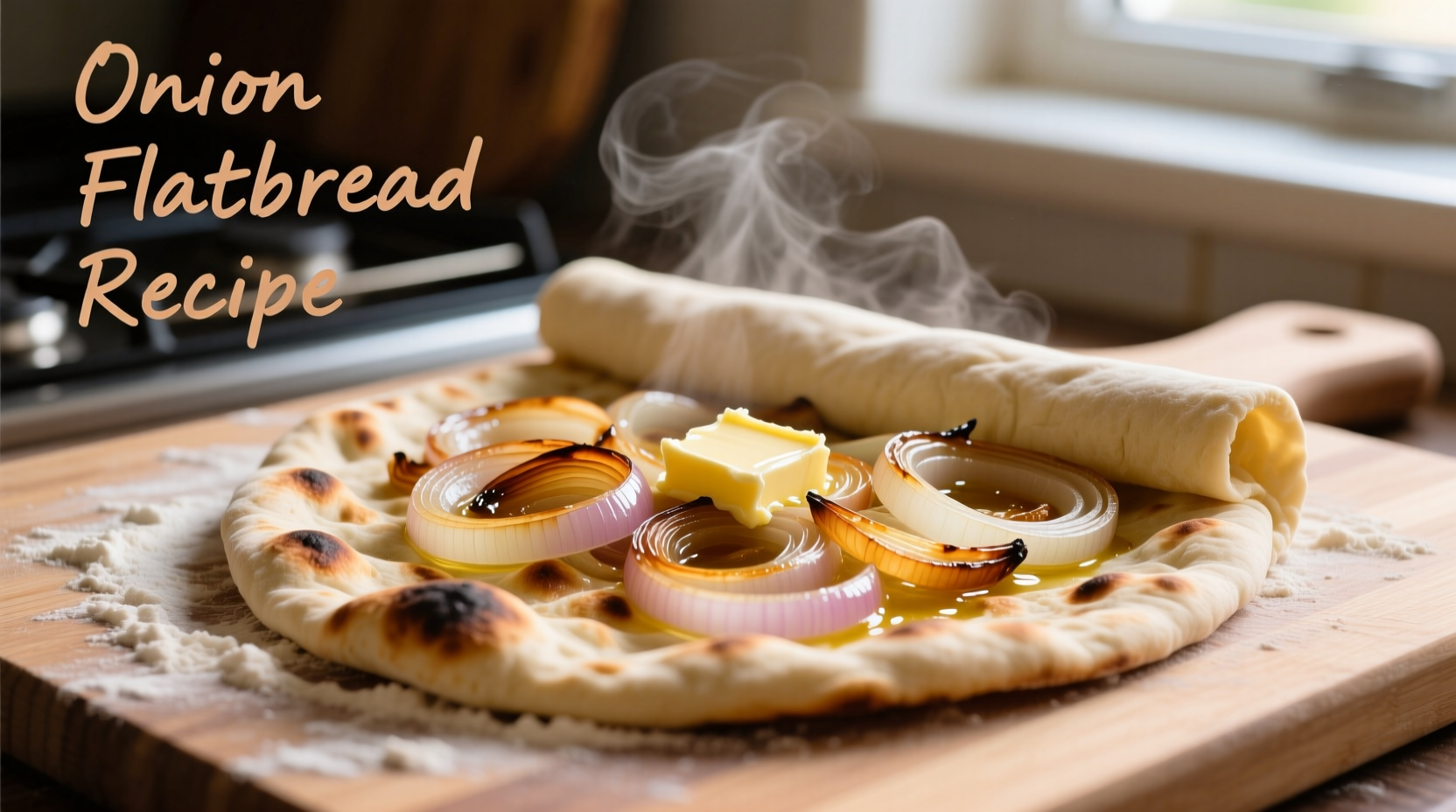There's something magical about the combination of caramelized onions and freshly baked flatbread. This onion flatbread recipe delivers a golden-brown exterior with a tender, chewy interior packed with sweet-savory onion flavor. Unlike many online recipes that skip crucial details, this version includes professional baker insights that ensure consistent results whether you're a beginner or experienced cook.
The Science Behind Perfect Flatbread
Flatbreads have been a staple food across cultures for thousands of years, with evidence of early flatbread production dating back to 7,000 BCE in Turkey according to archaeological findings from the University of Copenhagen (archaeology.ku.dk). The key to exceptional flatbread lies in understanding the gluten development process and proper hydration levels.
When onions cook, their natural sugars caramelize through the Maillard reaction, creating complex flavor compounds that elevate simple dough into something extraordinary. Professional bakers know that cooking onions slowly over medium-low heat for 20-25 minutes develops maximum sweetness without bitterness—a technique backed by food science research from the Culinary Institute of America (ciachef.edu).

Essential Ingredients Explained
What separates an average flatbread from an exceptional one? Precise ingredient selection and preparation:
| Ingredient | Why It Matters | Pro Tip |
|---|---|---|
| All-purpose flour | Provides optimal gluten structure | Spoon and level—don't scoop directly |
| Active dry yeast | Creates airy texture through fermentation | Test in warm water first to confirm activity |
| Yellow onions | Better balance of sweetness and pungency | Cook until deep golden, not just translucent |
| Sea salt | Enhances flavor and controls yeast activity | Add after initial mixing to prevent yeast kill |
Step-by-Step Preparation Guide
Preparing the Onions (15-20 minutes)
Start by thinly slicing 2 medium yellow onions. Heat 1 tablespoon of olive oil in a skillet over medium-low heat. Add onions with ¼ teaspoon salt and cook slowly, stirring occasionally, until deeply golden brown (about 15-20 minutes). Properly caramelized onions should be sweet with no bitter notes—this patience pays off in flavor depth.
Making the Dough (10 minutes active, 30 minutes resting)
In a large bowl, combine 2¼ teaspoons active dry yeast with 1 cup warm water (105-115°F). Let sit until foamy (5 minutes). Mix in 3 cups all-purpose flour, 1½ teaspoons salt, and 1 tablespoon olive oil. Add the cooled caramelized onions and knead for 5-7 minutes until smooth and elastic. Professional bakers recommend the "windowpane test"—stretch a small piece of dough; if it forms a translucent membrane without tearing, gluten development is complete.
Shaping and Cooking (15 minutes)
Divide dough into 4 equal portions. On a lightly floured surface, roll each portion into a ¼-inch thick circle. Heat a cast-iron skillet over medium-high heat. Cook each flatbread for 2-3 minutes per side until golden brown spots appear and bubbles form. Brush with melted butter and flaky sea salt immediately after cooking.
Troubleshooting Common Issues
Even experienced cooks encounter flatbread challenges. Here's how to solve them:
- Dough too sticky? Add flour 1 tablespoon at a time during kneading—but avoid adding too much, which creates tough bread
- Flatbread not browning? Your skillet isn't hot enough—test with a drop of water that should sizzle immediately
- Bland flavor? Ensure onions are properly caramelized and use high-quality sea salt for finishing
- Dry texture? Don't overbake—remove when golden with some soft spots remaining
Variations for Different Dietary Needs
This versatile recipe adapts beautifully to various preferences:
- Gluten-free: Substitute with 2 cups gluten-free all-purpose flour blend plus ½ cup tapioca starch
- Vegan: Already naturally vegan—just ensure your sugar contains no bone char
- Herb-infused: Add 2 tablespoons chopped fresh rosemary or thyme with the onions
- Spicy version: Mix in ½ teaspoon red pepper flakes with the dry ingredients
Serving and Storage Tips
For best results, serve immediately while still warm. Flatbreads pair perfectly with:
- Fresh tomato soup or lentil dal
- Grilled vegetables and hummus
- Simple green salad with lemon vinaigrette
Store leftovers in an airtight container at room temperature for up to 2 days. Reheat in a dry skillet over medium heat for 1-2 minutes per side to restore crispness—never use a microwave which creates sogginess. For longer storage, freeze between parchment paper layers for up to 3 months.
Frequently Asked Questions
Can I make onion flatbread without yeast?
Yes, you can create a quick version using 2 cups flour, 1 tablespoon baking powder, ½ teaspoon salt, 2 tablespoons olive oil, ¾ cup warm water, and 1 cup caramelized onions. Mix until a shaggy dough forms, rest 10 minutes, then roll and cook as directed. The texture will be more biscuit-like without the airy pockets of yeast-raised bread.
Why did my flatbread turn out tough?
Tough flatbread usually results from over-kneading, too much flour, or insufficient resting time. Measure flour properly by spooning into your measuring cup and leveling—don't scoop directly. Allow the full 30-minute rest so gluten can relax. If using a stand mixer, knead only until the dough pulls cleanly from the sides.
How can I prevent my flatbread from puffing up too much?
Excessive puffing creates hollow pockets that make flatbread difficult to eat. To prevent this, prick large bubbles with a fork during cooking. Ensure your cooking surface is properly preheated—too low heat causes uneven rising. Professional bakers also recommend rolling dough to consistent thickness (about ¼ inch) for even cooking.
What's the best onion variety for flatbread?
Yellow onions provide the ideal balance of sweetness and pungency for flatbread. Vidalia or other sweet onions work well but may burn more easily due to higher sugar content. Red onions add color but have a sharper flavor that some find overpowering. For best results, cook onions slowly over medium-low heat for 15-20 minutes until deeply golden.
Can I prepare the dough ahead of time?
Yes, you can refrigerate the prepared dough for up to 24 hours. After the initial rise, place dough in an oiled bowl, cover tightly, and refrigerate. When ready to use, let sit at room temperature for 30 minutes before shaping. The cold fermentation actually enhances flavor complexity through extended enzymatic activity.











 浙公网安备
33010002000092号
浙公网安备
33010002000092号 浙B2-20120091-4
浙B2-20120091-4